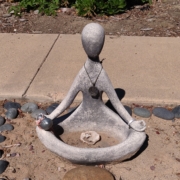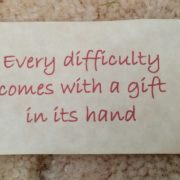Yoga for helping health professionals during a pandemic
As a helping health professional (HHP), I rely on my yoga practices to maintain mind-body health, work-life balance, and healthy boundaries with my clients. When colleagues share that they are challenged to maintain these things and ask me what I might do, my first response is all things YOGA. The responses I get range from a smile to a rolling of the eyes. Which got me thinking . . . since HHPs are among the highest risk occupational groups for mental and physical health challenges, is my self-care go-to (yoga) experience unique to me or might these tools really have a more across-the-board impact on such a group of professionals?
When I first started to practice yoga movement, I noticed how it relieved my low back pain that came from a herniated disc. It was due to practicing yoga movement on a regular basis that I did not require any physical therapy or back surgery then or now (although I did integrate regular chiropractor adjustments into my self-care practices since). As my back pain went away and I continued to add additional yoga practices to my activities of daily living, I discovered how much calmer and centered I felt mentally and emotionally. It was these cumulative positive experiences that motivated me to pursue becoming a yoga teacher and then a yoga teacher trainer!
One of the most powerful yoga practices that has served me well is Svadhyaya. It is one of the five Niyamas, or sacred habits for healthy living, of yoga. It is often translated simply as self-study within a larger connotation of introspection. Most of my yoga practices now occur off the mat, but finding the mat for the movement practice certainly reduced the symptoms of anxiety enough to open the door to the practices that actually become a way of life. That is why I am so passionate about recommending all things yoga to everyone!
So what does the research say about yoga as a tool to support those in the helping health profession overall, beyond me? Well, recent research took a look at that exact question. A systematic review that included 25 research articles around the effectiveness of yoga interventions among HHPs and students found that implementing yoga interventions in this population brings mental and physical benefits across a variety of settings and backgrounds, including a reduction in stress, anxiety, depression and musculoskeletal pain.
If you are interested in reading more, click the link below. If you are a helping health professional or student, consider sharing this link with those that might be in a position to support the implementation of such practices in the workplace or school.












